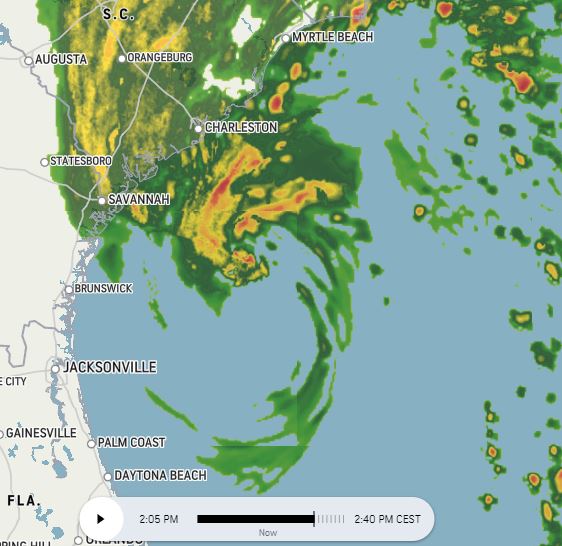
What is happening in the Carolinas is not just a hurricane. The catastrophic event ahead is probably more due to the Atmospheric River which #HurricaneIAN has directed onshore. The second image here roughly delinates the two.
On the ground however this is one weather event.

On the ground however this is one weather event.
https://twitter.com/althecat/status/1575837483165569024


More on the #HurricaneIAN - Atmospheric River combination, to understand this event in context, this is a very important part of the story.
#ExtremeWeather #ClimateChangeNow.
#ExtremeWeather #ClimateChangeNow.
https://twitter.com/althecat/status/1575835414732021760?s=20&t=yw8dGjs_tyAzcFhC_CoRdg
This thread also looks at this issue. #HurricaneIAN has been embedded in this atmospheric river since it started intensifying explosively.
This combination is I think pretty unusual, and it may lead to unexpected consequences in the Carolinas.
This combination is I think pretty unusual, and it may lead to unexpected consequences in the Carolinas.
https://twitter.com/althecat/status/1575349383868080129?s=20&t=yw8dGjs_tyAzcFhC_CoRdg
Especially if - as seems plausible - the reason that the storm is so resilient is the adjacent atmospheric river which the Hurricane is also strengthening.
This reminds me of the cause of Pakistan's flooding. Atmospheric rivers are persistent phenomena & this one is colossal.
This reminds me of the cause of Pakistan's flooding. Atmospheric rivers are persistent phenomena & this one is colossal.
• • •
Missing some Tweet in this thread? You can try to
force a refresh


























